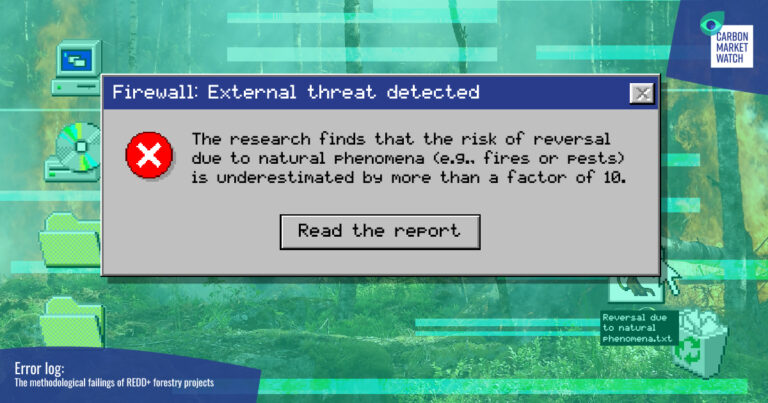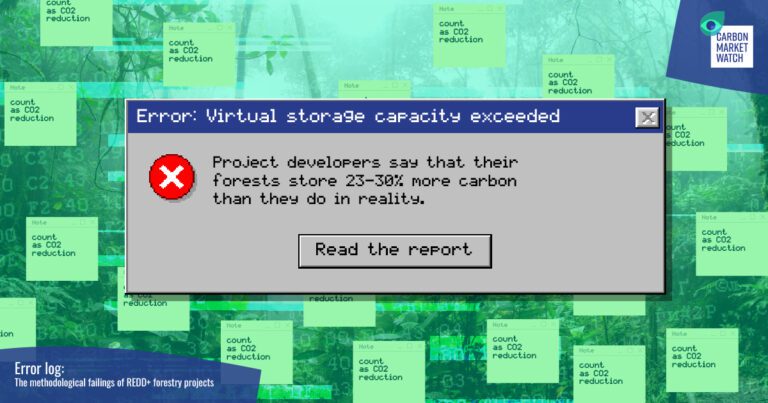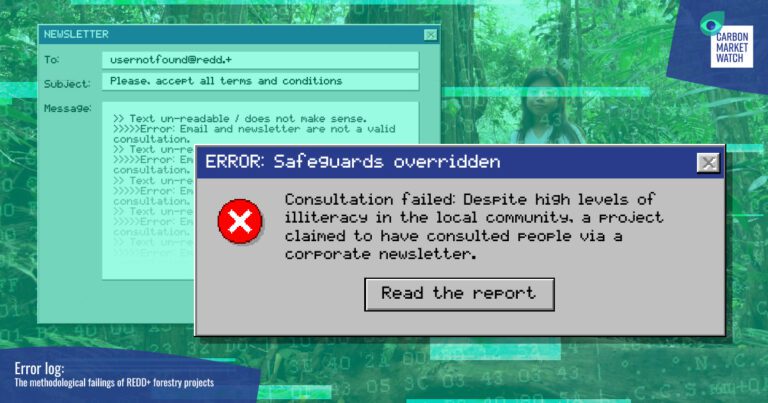For each of the key factors influencing carbon credit quality, REDD+ forest conservation project methodologies systematically fail to guarantee environmental integrity. This excessive flexibility enables project owners to game the system, stretching reality to the limit and create a vast quantity of junk carbon credits.

Project baselines are significantly overestimated, leading to the creation of carbon credits that represent imaginary emission reductions.
Within a sample of possible modelled baselines, the lowest baseline for a given project was, on average, 14 times lower than the highest baseline. This leaves an astonishing amount of leeway for project developers to pick the scenarios and parameters that will maximise the number of credits they can receive.
The risk that the trees protected by REDD+ projects will die in the future is also drastically underestimated by projects, which again use methodological flexibility to misrepresent the real deforestation threat that forests will face in the future.


Leakage is systematically underestimated by projects, which make use of flexibilities provided to them by the methodologies to downplay the risk of deforestation moving to areas outside of their project.
The creation of low-quality carbon credits is further fuelled by exaggerated estimates of the quantity of carbon stored within the trees that are protected by projects.
Methodologies provide a lot of flexibility to developers to choose equations that maximise credit issuance.


The safeguards implemented are weak, do not protect communities
from harm, and are not properly upheld by the validation and verification bodies.
There are several cases of blatantly ignoring negative effects and simply rubber-stamped projects.
“It is evident from the research that creative accounting and profiteering are endemic to the current REDD+ projects and enabled by methodologies that are not fit for purpose. Biodiversity, the climate and indigenous people or local communities are losing out on what should have been a system to drive meaningful financial flows to the forest conservation projects that so desperately need it. Offsetting should be axed. It cannot work in its current form, and carbon markets must evolve into something different. The focus should be on getting money to the right place, rather than getting as many credits as possible.”
Gilles Dufrasne, Policy lead on global carbon markets

Validation/verification bodies should apply safeguard policies strictly, ensuring that projects which do not comply or which are causing harm to local communities, indigenous peoples, or the environment do not get approved or have their approval withdrawn.

If storage is guaranteed for X years, then reversals should be monitored and compensated for that number of years following the vintage year of the credit.

All data, models and equations used to calculate the carbon content of forests should be publicly available, enabling independent researchers to reproduce and verify the calculations.

Storing carbon in forests should not be used to offset emissions from the combustion of fossil fuels. This false equivalence can lead to a shift of carbon from very stable geological storage of fossil fuels to volatile storage in living forests that are at risk of deforestation.

Uncertainty in baseline quantification should be measured, transparently communicated and taken into account when issuing credits.

All calculations, formulas and models used for baseline quantification should be made publicly available, including spreadsheets and risk maps where relevant, in a way that allows any outsider to recreate the baseline calculations independently.
Stay in touch and receive our monthly newsletter, campaign updates, event invites and more.
